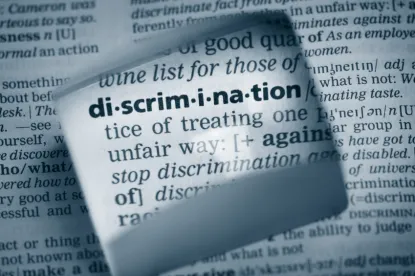“Today, we must decide whether an employer can fire someone simply for being homosexual or transgender. The answer is clear. An employer who fires an individual for being homosexual or transgender fires that person for traits or actions it would not have questioned in members of a different sex. Sex plays a necessary and undisguisable role in the decision, exactly what Title VII forbids.”
In a landmark ruling issued on June 15, 2020, the U.S. Supreme Court held that an employer who fires or otherwise discriminates against an individual simply for being gay or transgender does so “because of . . . sex,” in violation of Title VII of the Civil Rights Act of 1964. Writing for the majority, Justice Gorsuch, joined by Chief Justice John Roberts and the Court’s four liberal Justices, ruled that it is unlawful under federal law for employers to discriminate against employees based on sexual orientation or gender identity.
Three separate decisions came before the Court on appeal, but in each case, the employer was alleged to have fired an employee because of their sexual orientation or gender identity.
-
In Bostock v. Clayton County, Georgia, the employer fired a county employee for “unbecoming conduct” after he began participating in a gay recreational softball league.
-
In Altitude Express v. Zarda,the employer fired a skydiving instructor days after he mentioned that he was gay.
-
In G. & G.R. Harris Funeral Homes Inc. v. EEOC, a funeral home terminated a transgender employee’s employment after six years of employment following her announcement that she would begin living openly as a woman.
The three cases resulted in different outcomes, with the Second and Sixth Circuits finding (in Zarda and R.G. & G.R. Harris) that Title VII prohibits discrimination on the basis of sexual orientation and gender identity, and the Eleventh Circuit disagreeing (in Bostock) (see our previous post for additional background).
The Supreme Court resolved this Circuit split by holding that Title VII’s prohibition against sex-based discrimination in employment necessarily, by its plain language, includes claims of sexual orientation and gender identity-based discrimination. Title VII makes it unlawful for an employer to discriminate against any individual “because of such individual’s race, color, religion, sex, or national origin.” The Court explained that the ordinary meaning of the term “because of” incorporates the traditional standard of “but-for causation,” meaning that so long as the plaintiff’s sex was one but-for cause of the adverse employment action, that is sufficient to trigger application of Title VII.
The Court provided an illustration of how it is impossible to discriminate against a person for being homosexual without also discriminating against that individual based on sex:
Consider, for example, an employer with two employees, both of whom are attracted to men. The two individuals are, to the employer’s mind, materially identical in all respects, except that one is a man and the other a woman. If the employer fires the male employee for no reason other than the fact he is attracted to men, the employer discriminates against him for traits or actions it tolerates in his female colleague. Put differently, the employer intentionally singles out an employee to fire based in part on the employee’s sex, and the affected employee’s sex is a but-for cause of his discharge.
The Court provided a similar example to illustrate this in the context of gender identity to show that the individual employee’s sex plays an “unmistakable and impermissible” role in the adverse employment decision. Further, the Court asserted the role that intent plays in these decisions is unavoidable. “Just as sex is necessarily a but-for cause when an employer discriminates against homosexual or transgender employees, an employer who discriminates on these grounds inescapably intends to rely on sex in its decision-making.”
The Court analyzed, but ultimately rejected, the employers’ various arguments why Title VII should not apply to sexual orientation or gender identity discrimination. Most notably, the employers argued that few people in 1964 would have expected Title VII to apply to discrimination against homosexual and transgender individuals, and therefore Congress likely did not intend such an application. Justice Alito, joined by Justice Thomas, penned a lengthy dissent, asserting that discrimination because of “sex” is different from discrimination because of “sexual orientation” or “gender identity,” and that the role and duty of the Court is to interpret statutory terms to “mean what they conveyed to reasonable people at the time they were written.” Since, Justice Alito concluded, reasonable people in 1964 would not have interpreted “because of sex” to include sexual orientation and gender identity, he opined that the Court was wrong to do so now. Justice Kavanagh dissented separately. He acknowledged the significance of the Court’s ruling for the LGBT community, but maintained that Title VII was never intended to protect against LGBT discrimination and that, under the Constitution’s separation of powers, the responsibility to amend Title VII belongs to Congress. These arguments were considered but rejected by the majority, which held that legislative intent or conventional use of the term “sex” in 1964 is irrelevant where the text itself is unambiguous and the result certain when applied to the facts.
The majority acknowledged the employers’ argument that this decision will extend beyond Title VII to other federal or state laws that prohibit sex discrimination or invalidate sex-segregated bathrooms, locker rooms, and dress codes, but the Court reiterated that the only issue it was deciding was that an employer who fires someone simply for being homosexual or transgender has violated Title VII. The Court also put off for another day the resolution of how its present decision regarding sexual orientation and gender identity discrimination may impact certain employers’ religious liberty, as none of the employers in the cases before the Court raised such an argument before the Court in these cases.
Prior to the Supreme Court’s decision, some states and municipalities had adopted protections against sexual orientation and/or gender identity discrimination in the workplace, but it remained legal to discriminate on these bases in most jurisdictions. As of June 15, 2020, however, discrimination on the basis of sexual orientation or gender identity illegal by all employers covered by Title VII, extending workplace discrimination protection to the approximately 11 million Americans who identify as LGBT. Although many questions remain—such as how this decision will affect other laws and how the Court will resolve future questions regarding religious expression—it is now illegal for covered employers to make employment decisions based on an individual’s sexual orientation or transgender status.
Nearly every employer maintains an equal employment opportunity policy, which sets forth the employer’s commitment to compliance with the law by acknowledging that it will not discriminate on the basis of an employee’s (or applicant’s) race, color, national origin, religion, gender, or sex. With the Court’s decision, employers should promptly review and (if necessary) consider revising their anti-discrimination policies to clarify that prohibited discrimination on the basis of sex also includes sexual orientation and gender-identity based discrimination. (Note that a policy that does not explicitly call out these bases is not unlawful or otherwise deficient per se, as the Court’s ruling was that “sex” as used in Title VII includes sexual orientation and gender identity/expression discrimination; it is not a separate or newly-created category.) Employers also may wish to consider adding new content to anti-discrimination training, particularly in those jurisdictions where such training may be required as a matter of state law.







 />i
/>i

